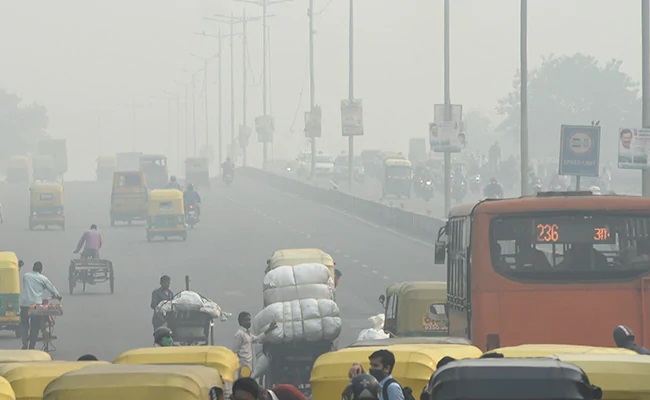Air Quality In Delhi, Adjoining Areas Falls To “Severe” Category
Delhi recorded an overall Air Quality Index or AQI of 414 on Saturday, which falls in the "severe" category.
New Delhi, November 14, 2020: The air quality in Delhi and surrounding areas dipped to “severe” on Saturday as people defied a ban on lighting Diwali firecrackers in several areas, worsening the pollution caused by burning farm waste in neighbouring states.
The city recorded an overall Air Quality Index or AQI of 414 on Saturday, which falls in the “severe” category. The 24-hour average AQI was 339 on Friday and 314 on Thursday.
Stubble burning accounted for 32 per cent of the city’s PM2.5 pollution, weather officials told news agency PTI, referring to the tiny particles that can be carried into the lungs, causing deadly diseases, including cancer and cardiac problems.
Almost all areas in the city logged PM2.5 levels above 400 with many regions nearing the 500-mark. Anything above 60 is considered unhealthy. A thick layer of smog enveloped the entire region reducing the visibility.
Residents complained about stinging eyes, sore throat and breathlessness as the city grappled with the third wave of the coronavirus pandemic.
Calm winds have exacerbated the situation, allowing the accumulation of pollutants, weather officials said.
The Ministry of Earth Sciences’ air quality monitor, SAFAR, said, “Even a small increase in local additional emissions is likely to have significant deterioration impact on Sunday and Monday.”
It said peak levels of PM10 and PM2.5 are expected between 1 am and 6 am in case of additional internal emissions.
Delhi recorded a 24-hour average AQI of 337 on Diwali last year (October 27), and 368 and 400 in the next two days. Thereafter, pollution levels remained in the “severe” category for three days.
This time, the India Meteorological Department has said that a fresh western disturbance could increase the wind speed and improve the air quality in Delhi-NCR after Diwali.
Light rain is likely on Sunday under the influence of a western disturbance. It is still unclear if it is enough to wash away pollutants, Kuldeep Srivastava, the head of the IMD’s regional forecasting centre, said.
V K Soni, the head of the environment research centre at the India Meteorological Department, said firecrackers may push the air quality to the “severe” zone on Diwali night, along with calm winds and smoke from farm fires.
The Delhi Police arrested 10 people for selling firecrackers and registered 12 cases in the national capital, officials said on Saturday.
The Delhi government and the National Green Tribunal (NGT) has totally banned on the sale or use of all kinds of firecrackers in the National Capital Region (NCR) from November 9 midnight to November 30 midnight, noting the horrific pollution levels.
A bench led by NGT Chairperson Justice Adarsh Kumar Goel clarified that the direction will apply to all cities and towns in the country where the average of ambient air quality during November 2019 was in “poor” and above categories.







